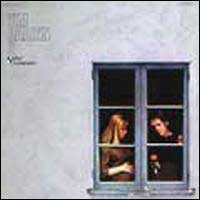|
Tim Hardin's debut album was something of a happy accident, a killer
record at least a third of which was comprised of tracks intended as demos,
while another half utilized a string orchestra that the artist knew nothing
about. Whatever its origins, Tim Hardin 1 is one of the most powerful
and compelling records of its era, encompassing deeply personal and compelling
poetry, blues, rock, and folk in settings ranging from stripped-down Sun
Records-style rock & roll to lightly orchestrated folk-rock. The beautiful,
briskly paced "Don't Make Promises" -- which, along with "Reason
to Believe," became one of the two huge songwriting hits here --
opens the album on an ambitious note, its sound mixing a small-band and
string section behind a confessional lyric. "Green Rocky Road"
and the rollicking "Smugglin' Man" are both more in a traditional
folk-rock vein, showcasing the darker and rougher side of Hardin's singing,
while "How Long" carries listeners into electric blues that
is as raw and stripped down as anything coming out of the British blues
boom of the same era, and which could've passed muster on Chess' Fathers
& Sons blues showcase. Hardin wasn't happy about the presence of the
blues-style demos on the finished album, but when they're placed alongside
such startlingly original and personal songs as "Reason to Believe,"
"Misty Roses," "While You're on Your Way," "It'll
Never Happen Again," and "Hang on to a Dream," they vividly
show off the sheer range of Hardin's singing and his musical sensibilities.
The string accompaniment on most of those songs reportedly wasn't to Hardin's
liking, but Artie Butler's arrangements are models of restraint, and the
bluesier cuts here keep the album from going too far in that direction.
And so what if "Ain't Gonna Do Without" was Hardin's informal
joke based on "Hi Heel Sneakers," never intended for release?
It offered some of the best blues harmonica that John Sebastian ever laid
down on a record. The result is a seminal folk-rock album, every bit as
exciting and urgent as it was in 1966, and as important a creative effort
as Bob Dylan's Bringing It All Back Home and Highway 61 Revisited. And
this wasn't even Hardin's best album, though it set the pattern for everything
he did after.
(by Bruce Eder, All
Music Guide)
|

 Plattentipp
Plattentipp 















 #711 Virgin/Colin Larkin(2000)
#711 Virgin/Colin Larkin(2000) eins von 100 Insel-Alben von Günter Ramsauer (1961-2002)
eins von 100 Insel-Alben von Günter Ramsauer (1961-2002) eins von 50 verkannten Meisterwerken (Rolling Stone, 2010)
eins von 50 verkannten Meisterwerken (Rolling Stone, 2010) 